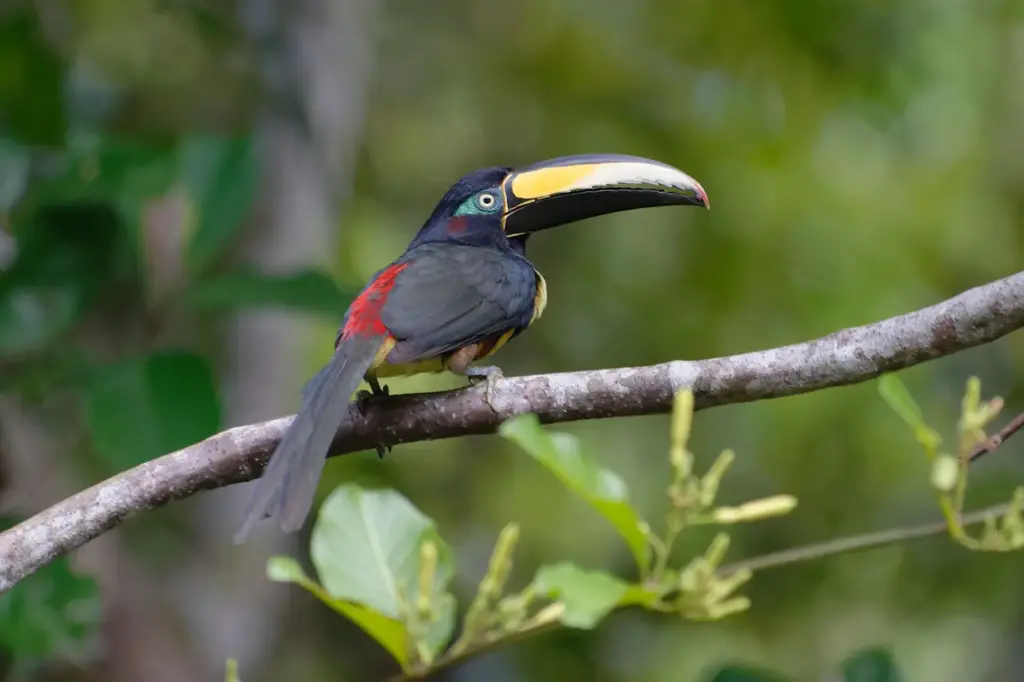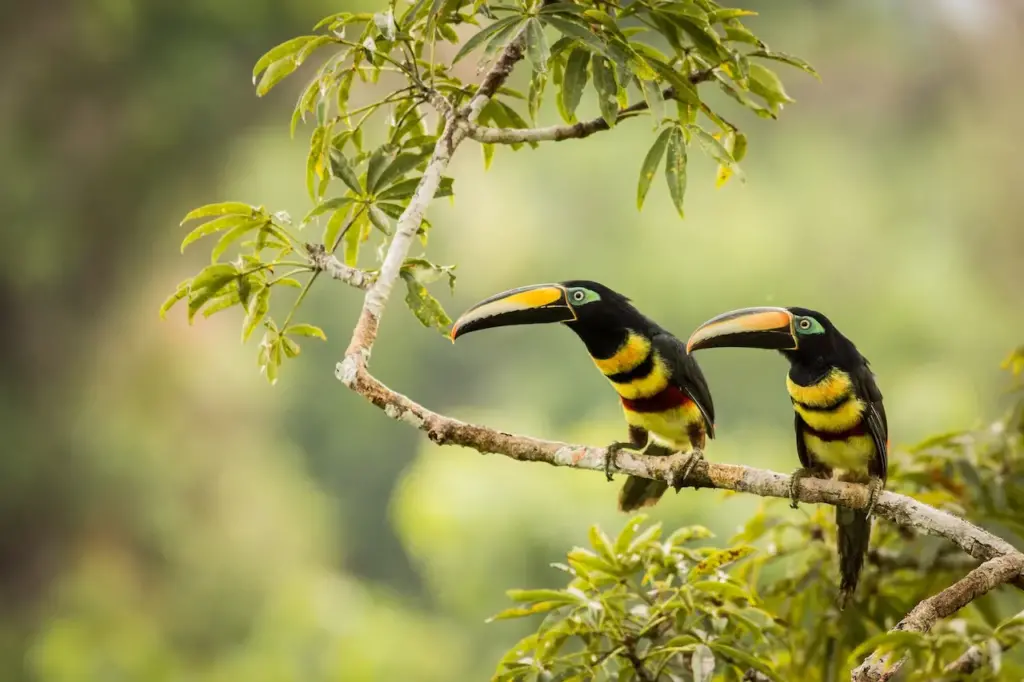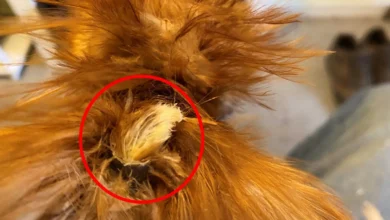The Many-banded Aracaris (Pteroglossus pluricinctus) are South American Aracaris that are found in north-western Brazil, eastern Colombia, Ecuador, eastern Peru and southern Venezuela.
They inhabit subtropical or tropical moist lowland forests and sandy-soil woodland.
Aracaris generally roost socially throughout the year. Up to five adults and their fledged offspring sleep in the same hole with their long tails folded over their backs.

Description:
The Many-banded Aracaris has a pale upper bill and a black lower bill (mandible). It has two distinctive black bands across its abdomen – unlike any other aracari.
The Many-banded Aracari looks similar to the Pale-mandibled Aracari – except the Pale-mandibled Aracari’s skin around the eyes is red, while the Many-banded Aracari’s is blue.
The Pale-mandibled Aracari has a large black spot on the center of its chest, while the Many-banded Aracari has a band across the breast.
Reproduction
They typically nest in an abandoned woodpecker nest hole, or other tree cavity.
Both the male and female share the incubation and chick rearing duties. Their eggs are white and elliptical shaped. The clutch size consists of 3 to 4 eggs and the incubation lasts for about 16 days.
The newly hatched chicks are blind and naked with short bills and thick pads on their heels to protect them from the rough floor of the nest. Both parents, as well as their previous offspring and/or possibly other adults, feed the chicks.
The young fledge after about 6 weeks. The adults continue to feed them for several weeks after fledging.

Aviculture
These active Aracaris require large, planted flights. Aracaris are generally docile and can be kept with smaller birds — but not birds so small that they (or their young) could be considered as prey by these large birds, such as finches. Breeding pairs are best kept alone.
Captive birds may breed in nest boxes with a concave bottom; however, they generally prefer natural nests constructed from palm tree logs, which allows them to dig their nest chambers deeper.
Jerry Jennings, President / Director of Emerald Forest Bird Gardens provides the following input:
“Toucanets and Aracaris all require the same space. The smallest breeding flight I have used was 4′ x 10′ x 6 feet high and the flights I currently use are 8′ x 12′ x 8 feet high and the newest flights are 8′ x 16′ x 8 feet high.
They need the proper diet, a nest log and the pairs must be compatible.
I would start with the easiest, so when you have babies you will feel a sense of accomplishment and want to continue. If you start with a difficult species you will have much less luck and may become discouraged.” (Source: Jerry Jennings, President / Director of Emerald Forest Bird Gardens)



